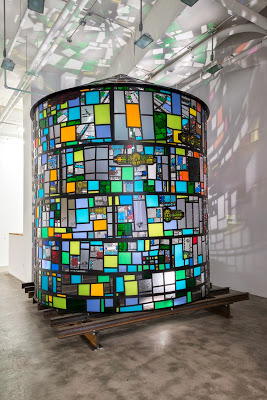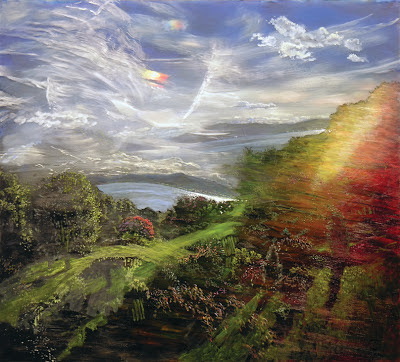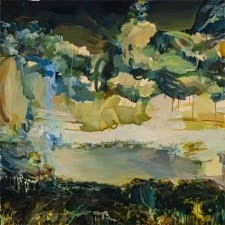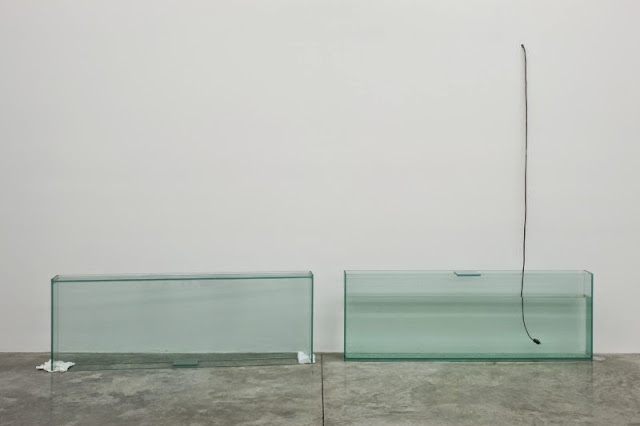TOM FRUIN "COLOR STUDY" AT MIKE WEISS GALLERY

When Tom Fruin was first on the scene, with his installed collages of drug paraphernalia, I remember the excitement that these works incited. Here was an artist whose work was about introducing elements of the depraved, anarchic, and malevolent into contemporary art. The drug bags were a new element in contemporary mixed media art because they were not only an extremely marginalized detritus, but that they were also representative of the substantive presence of drug use within the art world. In some commons, the use of drugs is synonymous with success: the ability to acquire illegal substances being in some way a measure of the power of the user, and the freedom to use, or abuse them, proof of the legitimacy of the role of the artist, who will always exist in some way at the edge of society. At some point after 9/11 (the tragedy of which made all lesser attempts to pay lip service to the melodramatic role of the madman artist seem like caricatures), Fruin grew up. H





